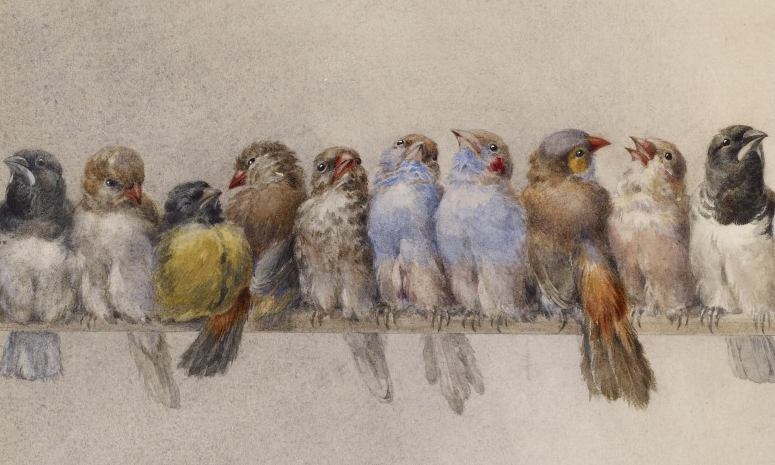Largely considered a Hallmark holiday by cynics (that is, everyone who isn’t ‘gettin’ some’), the history of St Valentine’s Day is a bit of a mystery. Some will tell you it all started with American commercialism. And some devout will insist it began in Catholic tradition. But its origins are much more literary than you may have thought.
So Who Was Saint Valentine?
Even within the Catholic church, the existence of the titular saint is a matter of perspective. Certainly there was someone (or a few someones) named Valentine who died around 270 AD and was beatified in the 400s AD. But as to this someone’s connection with romantic love? Well, people go back and forth on this.
The Church’s current stance on St Valentine is that we just don’t know anything about him 1. What did he do? How did he die? Where was he from, and when did he live? Who knows. The early Church made sure there was a saint for every day on the calendar. So sometimes that meant pulling up a dubious character just to make sure there was a name on the books.
And in 1969, the Catholic Church finally decided to discontinue the veneration of St Valentine. Though controversially so 2. Stories of St Valentine secretly marrying young couples, falling in love with his jailer’s blind daughter and sending the first ‘valentine’ have been around for hundreds of years. But they were likely just retcons 3. February 14 didn’t truly become associated with love until the 14th century.
Chaucer’s “Parlement of Foules”
The man we actually hold responsible for linking February 14th with a day for gettin’ some is Geoffrey Chaucer. Yeah, the same bloke who brought us April Fool’s Day. It was his 1381 poem “Parlement of Foules” 4 that linked the mating patterns of birds with the feast day of St Valentine:
For this was on Saint Valentine’s day,
When every fowl comes there his mate to take,
You see, mating birds became the first signs of the end of winter and the blossoming of new life:
Saint Valentine, who art full high aloft –
Thus sing the small fowls for your sake –
Now welcome summer, with your sun soft,
That this winter’s weather does off-shake.
St Valentine’s Day became the last day of winter and the beginnings of summer (this was before spring and fall were fully recognized as seasons), and what happens at the beginning of summer? Well, flowers bloom, rabbits multiply, birds lay eggs and bees pollinate. Speaking of which, that’s how the birds and the bees became a euphemism for ‘the sex talk’—though the idiom is frequently attributed to the 1825 Samuel Taylor Coleridge poem “Work without Hope”.5 Also this is the same reason rabbits and eggs are symbols of Easter.
Valentines for the Loveless
But not all Valentine’s Day traditions are about sex. In Finland, Valentine’s Day is called Ystävänpäivä. That’s ‘Friend’s Day’ if you’re having trouble pronouncing that, and it’s a day for cherishing platonic friendships.
And speaking of platonic, generally the word is used to describe close relationships devoid of sexual involvement 6—an intellectual love rather than a romantic one. But the use of this eponym is interesting since Plato felt that sexual relations in an intellectual partnership were simply another way to foster intellectual growth. And he often had sex with his pupils 7. So next time you unwillingly find yourself in a platonic relationship, be aware that sex isn’t necessarily off the table (but perhaps under it).
- Akin, Jimmy | “Who was St. Valentine, and how did his feast day of February 14 come to be regarded as a day for romance?” | Catholic Answers | 2011
- Anderson, Karen | “Give Me Back My Valentine!” | Crisis Magazine | 2014
- “A Short History of ‘Retcon’” | Merriam-Webster
- Chaucer, Geoffrey | “Parliament of Fowls” | 1381
- Coleridge, Samuel Taylor | “Work without Hope” | 1825
- “Platonic” | Merriam-Webster
- Kennedy, Jay | “More sex please, we’re Greek: exposing the myth of Platonic love” | Phys.org | 2011

